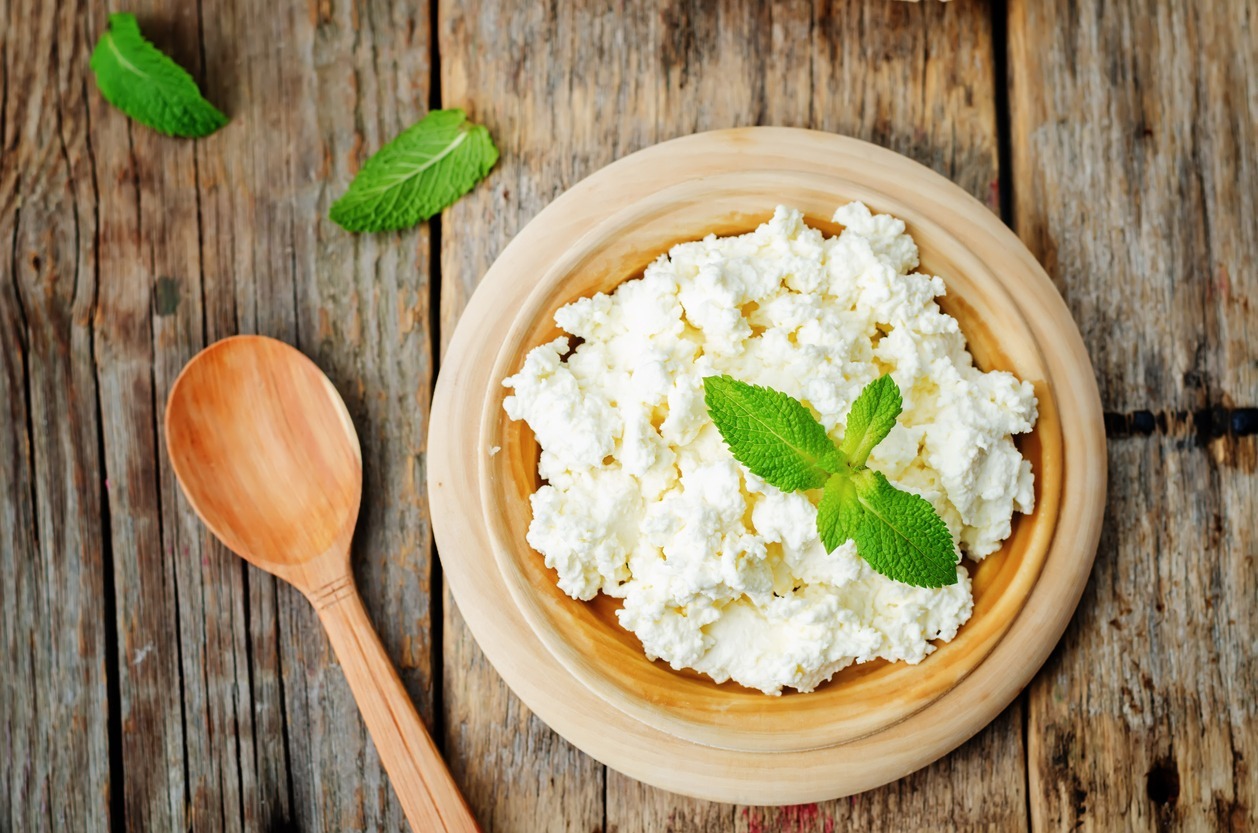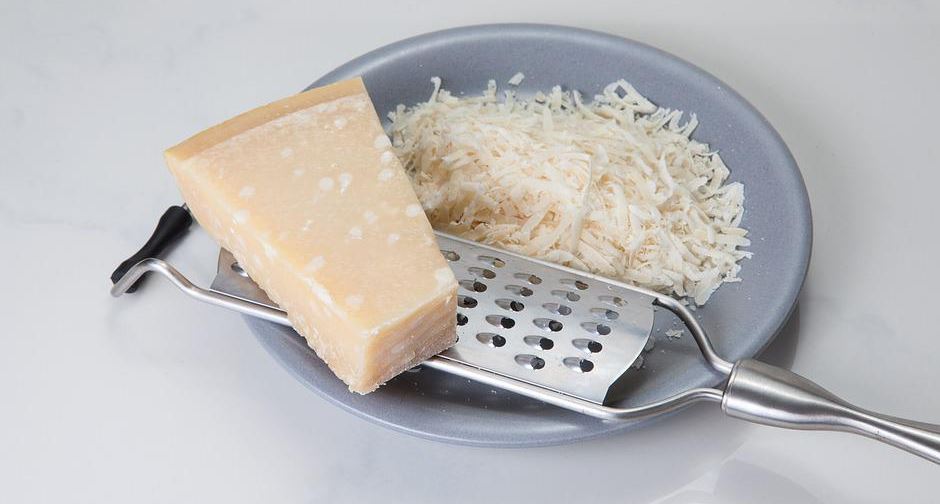Cheese is the most widely consumed food made from mammalian milk, primarily that of cows, goats, and occasionally sheep. In general, the finished product is white. Because of the grazing conditions, the color of some animal milk varies.
Because of this, the white color may vary, as may the addition of some special cultures during the manufacturing process. Non-white cheeses, on the other hand, are typically dry. Cheeses can be divided into various names and groups based on their white color. The flavor and texture also differ due to the addition of some special cultures.
Certain grazing conditions and ingredients added to modify the flavor of the cheese will result in tints to an animal’s milk, though most non-white cheese is essentially dyed. Due to this, there is a broad range of white cheeses today, each with its flavor, application, and texture. These are the most common types of white cheese.
Feta
Feta is a wet, soft cheese with a rough surface and a bright white color. It is frequently stored in brine, which keeps it moist and adds a salty taste to the cheese.
Feta is made by curdling milk with rennet or microbial rennet, allowing the mixture to break away and drain. The curds are then sliced, salted, and pressed before immersed in a brine solution to cure. In Greek salads, feta cheese is frequently combined with olive oil, lettuce, cucumbers, tomato, and fresh basil.
Because feta is bundled in brine to keep it fresh, it can be rich in sodium. It is, however, lower in calories than other cheeses.
One ounce (28 g) of full-fat feta cheese contains the following nutrients:
- Calcium: 10% of the Reference Daily Intake (RDI)
- Calories: 80
- Carbs: 1 gram
- Fat: 5 grams
- Protein: 6 grams
- Sodium: 370 mg – 16% of the RDI
Like all full-fat dairy, feta contains conjugated linoleic acid (CLA), linked to better body composition and lower body fat. As a result, eating CLA-rich foods like feta may improve body composition.
Feta and other sheep’s milk cheeses typically contain more CLA than other cheeses. However, research has been limited and has primarily focused on CLA supplements.
To incorporate feta cheese into your diet, try adding it to eggs, crumbling it over salads, or making a dip to serve with fresh vegetables.
Gruyere
Gruyere is a traditional Swiss cheese produced from cow’s milk and made to age. This cheese has a slightly sweet, nutty flavor that is great for fondues and goes well with Zinfandel or champagne.
Jack Cheese
Jack cheese (also called Monterey Jack cheese) is a semi-soft, buttery-ivory-colored cheese named after its creator’s hometown. Fresh Jack cheese is made from skimmed or whole milk and aged for only a week before being used in cooked dishes or sandwiches, where its freshness and high moisture content contribute to its melting ability. Aged Jack hardens and develops a rich, sharp flavor, making it ideal for grating.
Mozzarella
Mozzarella is a mild-flavored semi-soft cheese. Originally, mozzarella cheese was made only from water buffalo milk, and it is still obtainable in some specialty stores. Most modern mozzarella is made with skimmed or partially skimmed cow’s milk.
This cheese’s curds are dipped into hot whey before being stretched and kneaded, giving it a stringy, elastic texture. There is also fresh mozzarella produced from whole milk available.
Mozzarella cheese contains fewer calories and sodium than other cheeses. One ounce (28 g) of full-fat mozzarella contains the following ingredients:
- Calcium: 14% of the RDI
- Calories: 85
- Carbs: 1 gram
- Fat: 6 grams
- Protein: 6 grams
- Sodium: 176 mg – 7% of the RDI
Mozzarella also contains probiotic bacteria, such as Lactobacillus fermentum and Lactobacillus casei strains. Human and animal studies indicate that these probiotics may boost immunity, improve gut health, and reduce inflammation in the body.
As a result, dairy products containing this probiotic, such as mozzarella, may aid in the fight against infections and strengthen your immune system. More research, however, is required.
Mozzarella is delicious in a Caprese salad with basil, fresh tomatoes, and balsamic vinegar, and you can use it in various recipes.
Parmesan
Parmesan is a traditional Italian dry, hard, straw-colored cheese with a sharp flavor. It is typically aged two to four years after being made from skimmed cow’s milk.
Reggiano and Padano are two types of Parmesan cheese labeled after the Italian regions where they are produced. Padano has a slightly sweeter flavor than Reggiano, which has a stronger flavor. Although pre-ground Parmesan is available, the flavor is better when purchased whole and crushed just before eating.
The finished product is nutrient-dense. One ounce (28 g) of Parmesan cheese contains the following nutrients:
- Calcium: 34% of the RDI
- Calories: 110
- Carbs: 3 grams
- Fat: 7 grams
- Protein: 10 grams
- Sodium: 330 mg – 14% of the RDI
A 1-ounce (28-gram) serving contains nearly 30% of the RDI for phosphorus.
Because Parmesan is high in phosphorus and calcium (nutrients that aid in bone formation), it may benefit bone health. Furthermore, because it has been aged for a long period, Parmesan has very low lactose content and can typically be tolerated by most lactose-intolerant people.
You can sprinkle grated Parmesan cheese on pizzas and pasta. It’s also good sprinkled on eggs or spread on a cheese board with nuts and fruit.
Ricotta
Ricotta is a moist, white cheese with a mildly sweet flavor typically made from the whey drained off in the production of provolone or mozzarella cheeses. It is technically a by-product of the cheese-making process. The term “ricotta” is derived from the Latin word “recocta,” which means “cooked twice.”
Ricotta cheese is used in Italian cooking and is firm but not solid. It complements almonds, nutmeg, garlic, tomatoes, spinach, and vanilla.
A 1/2-cup (124-gram) helping of whole-milk ricotta contains the following ingredients:
- Calcium: 20% of the RDI
- Calories: 180
- Carbs: 8 grams
- Fat: 12 grams
- Protein: 12 grams
- Sodium: 300 mg – 13% of the RDI
Ricotta cheese’s protein is mostly whey, a milk protein containing all the essential amino acids humans require from food. Whey is easily absorbed and has been shown to help lower blood pressure, promote muscle growth, and lower high cholesterol levels. While ricotta may have similar advantages, more research on whey derived from whole foods is required.
Ricotta cheese complements salads, pasta, scrambled eggs, and lasagna. You can also serve it with fruit for a sweet-and-salty snack, or it can be used as a base for creamy dips.




